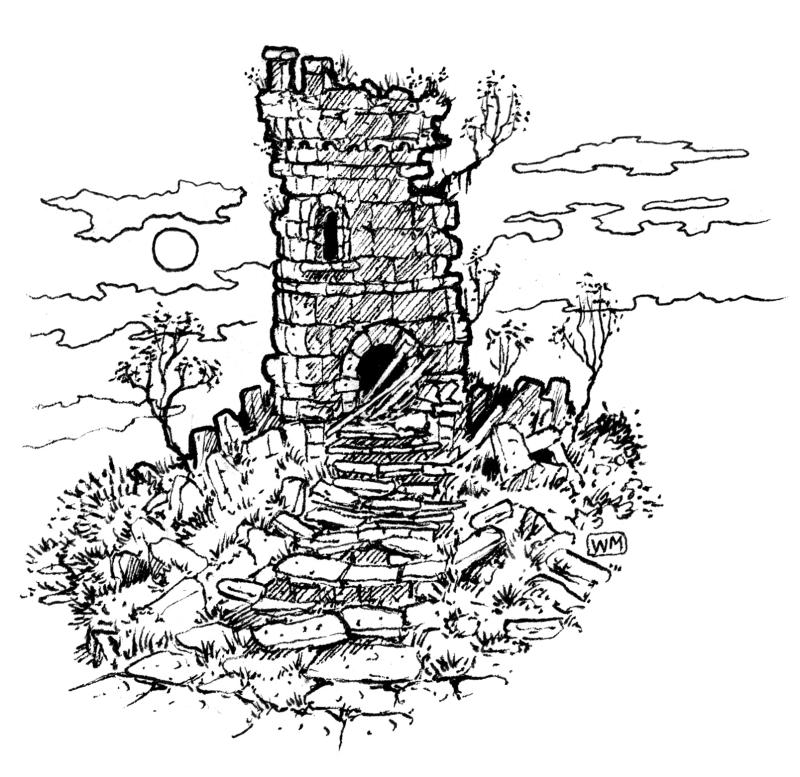I recently blogged about what I learnt about adventure design from watching Bond films. Bond isn’t the only figure from entertainment with valuable gaming-related lessons, though. Bob the Builder is also particularly wise…
If you’ve got kids, you are probably aware of Bob the Builder. With his relentless positivity, a can-do attitude and (of course) some talking vehicle helpers, he’s great role model and teacher for kids.
Bob’s got three rules I think GMs should embrace: reduce, reuse and recycle. Following the reduce, reuse and recycle method of GMing frees up more time to focus on the important facets of a campaign such as an overarching plot, personalised adventures for the PCs and more.
Reduce
This is Bob’s first rule and it’s a cracker. Wherever possible, use the minimum amount of materials and effort to achieve your goals. This might mean some or all of the following:
- Borrow: Borrow maps, plots, stat blocks, treasures and more from existing campaign settings and adventures.
- Design: Only design what you must. Do you really need four different kinds of goblin warrior? Probably not, and you’ll save loads of time (and in-game hassle) by designing only one.
- Modify: Modify an existing adventure or location to suit your campaign is faster than designing it from scratch. I’ve imported whole villages and towns into my Borderland of Adventure campaign by simply tweaking a few key details.
Reuse
Can you reuse some element of your campaign, without the players realising (or caring)? For example, it should be relatively easy to reuse:
- Stat blocks: If you’ve got a man-at-arms, orc warrior or similar simple stat block you can use it again and again. Maintain a file of useful stat blocks and you’ll save tons of time down the line.
- Locations: Setting up a couple of familiar locations is a good investment in design time. These could be taverns, shops or entire villages and towns. In the long run, it saves you time and helps ground the campaign. Using familiar locations also emotionally invests the PCs in the area. This makes it easy to motivate players to go on adventures that affect the locality.
- NPCs: As your campaign develops, you’ll likely build up a bank of NPCs. When the PCs seek a particular service, the PCs will naturally seek out those individuals if the GM steers them in that direction. Doing so enables the PCs to build a relationship with the NPC while simultaneously cutting down the GM’s prep.
Recycle
If you can’t reuse it, recycle it. That means you might need to pull it apart for its components or rebuild it to better suit your needs.
- Stat Blocks: Recycling a stat block is easy. Remember, you only need to tweak the bits of the stat block with which the PCs interact. Simply change the NPC’s appearance, weapons used, spells memorised and so on and you’ve got (seemingly) a completely different NPC.
- Maps: Using a portion of a map, or making minor modifications to a map, is a great way of quickly generating a new locale ripe for exploration. As long as you don’t use the same map repeatedly they’ll never notice. (And if they do, perhaps its the architectural style of a certain race of culture – all their tombs are built this way).
- Encounters: If you ran an adventure and the PCs didn’t do all the encounters don’t let your preparation go to waste. Try to repurpose the encounters for later use. They could stand in for random encounters on the road or dungeon, minor encounter areas in a larger dungeon or simply backups you keep in your folder in case you need extra material fast.
I’ve only scratched the surface of reduce, reuse and recycle in this article. If you’ve got examples of how they’ve help you in prepping your game share them in the comments below and help your fellow GMs run better games with less prep.

Excellent advice. Anything that saves you time on the mechanics side of things will give you more time to work on how the game will play. And reoccurring NPCs are always fun.
I live and game with these values, great blog!
Great advice! I use bits and pieces from all sorts of modules and supplements when I’m running my game. The hardest thing is keeping track of all the good stuff I’ve got so I don’t forget it.
Make a list in Evernote!
http://www.creightonbroadhurst.com/gaming-advice-4-reasons-evernote-is-a-great-gamer-tool/#more-1283
I have hamlet/village/small town maps on acetates. This means I can turn them upside down and back to front, re-describing them with different map directions without losing my flow, and getting four uses out of them. If I need something bigger, I overlay a number of acetates to get a bigger picture. Works for me!
Great idea! One of my players–who also GMs–gave me the tip of putting large area maps (like town maps) under a layer of clear plastic sheet. This not only protects the map, but lets you draw on it (which obviously wipes off afterwards).
You are a marvel, Creighton! This is more superb, perfectly applicable D&D advice.
I uh, re-use ideas from TV shows, books, etc. all the time. If one is gifted with enough imagination, Bob the Builder (as you point out) or even Dora the Explorer could be the source of a few ideas that can be incorporated into D&D.
Of course! As I recall, she had a rather impressive backpack!
I reused the basic layout for the solo dungeon from the Menzter red box. There were different staues in the entry way, and different riddles for the magic mouths, and slightly different maps. The dungeons had all been created by the wizard Gygar. The group found it interesting, and it helped tie things together later when they found his castle. The riddles were used to enter his library.